We have entered the last full week of March, and I’ve yet to mention that it is “National Flour Month,” a near-unforgivable oversight for someone who enjoys making homemade bread as much as I do. My adventures with sourdough have been well-documented here on Comfort du Jour, but it took St. Patrick’s Day to bring me back around to making our favorite sourdough pumpernickel. It had to be done, given the volume of homemade corned beef we have (not to mention all that pastrami), and the rising aroma of this bread from the oven was enough on its own to convince me I’d waited too long.
What makes this bread extra special for me is that I make my own flour for it, from freshly milled rye grain. This sounds more impressive than it really is, thanks to a handy grain mill that latches onto my KitchenAid stand mixer. I just turn the dial to select the grind, pour in the grain and turn it on. I purchased the mill in the summer of 2016, when “Pete,” my sourdough starter, was still wet behind the ears, and I’ve found it particularly useful for some of my lesser-used grains, including rye. After whole grain has been milled into flour, the freshness clock starts ticking, and there is nothing tasty about rancid flour. Now, when I want to make rye bread (or pumpernickel, which is technically almost the same), I mill the grain fresh, but only the amount I need, and I’m good to go with flour that far excels what I could have bought pre-milled.
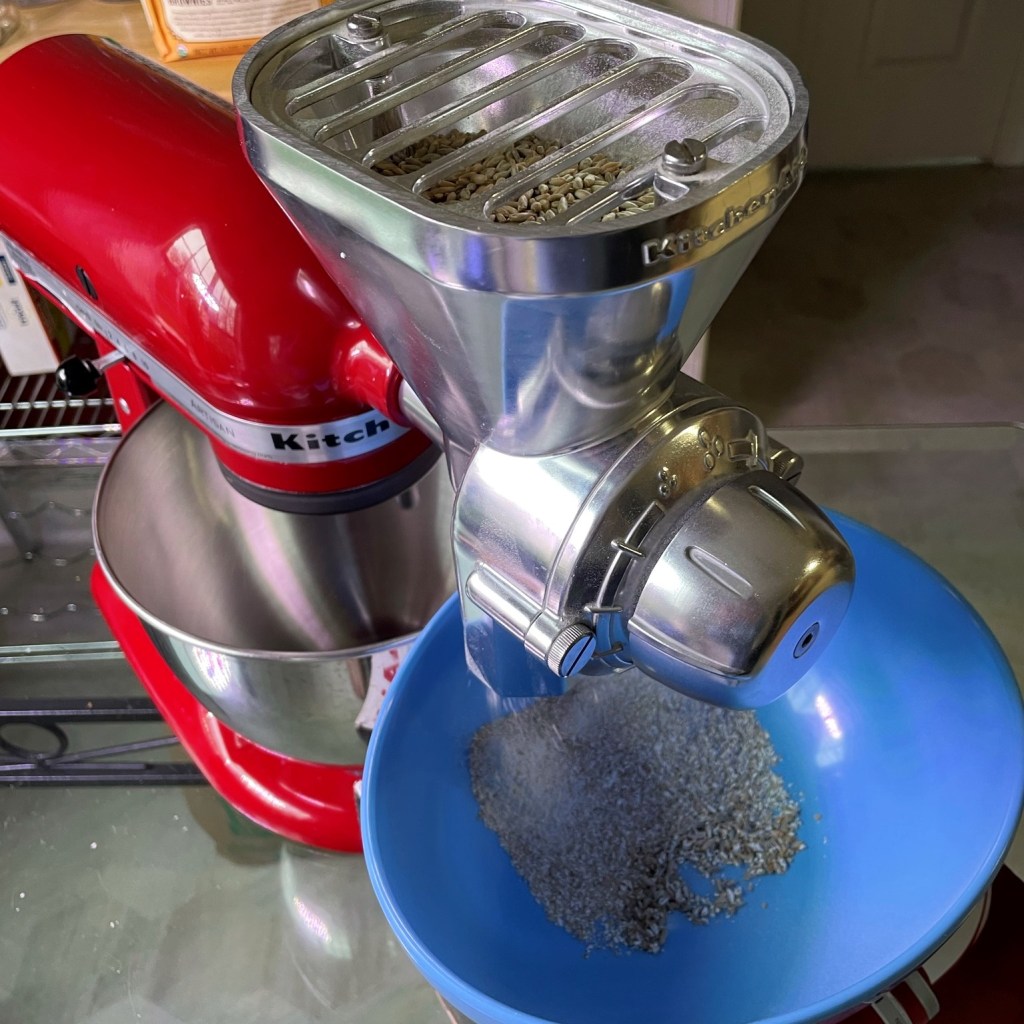
This recipe relies on sourdough for rise and flavor, though there is also a small (optional) amount of instant dry yeast to boost the rising power and make the ferment time more predictable. As with many other sourdough loaves, this one begins the day before with a pre-ferment called a “sponge,” and that’s when the freshly milled rye flour starts working its magic. The rest of the flour is high-protein bread flour, which is needed for its strength because rye does not have a lot of gluten.
Coarse-milled whole rye grain is known as pumpernickel meal, and it may surprise you to know that the dark, rich color of “pumpernickel” bread is mostly for show, and it comes into the bread by way of either caramel color (which isn’t likely in your pantry), strong coffee (either liquid or powdered) or—as is the case with mine—cocoa powder! And no, it does not make the bread taste like chocolate. There’s also an unusual, time-honored technique that will come into play with this bread, and it involves bread from another time (more on that in a minute).
Up to this point, the sourdough pumpernickel recipe I’m describing has been drawn straight from p. 246 of Peter Reinhart’s The Bread Baker’s Apprentice, the same book I depended on to learn sourdough baking in the first place. But something in my nature will not let me leave well enough alone, and I have put my own spin on this recipe—not because I think I know better than the author, but because I love certain additional flavors in my rye breads, and so I have either substituted or added ingredients, following rules that Reinhart himself would approve. Rather than brown sugar, I add molasses for a deep, earthy sweetness, and I accent this bread with onions, dill and caraway seeds, none of which are called for in the original recipe.
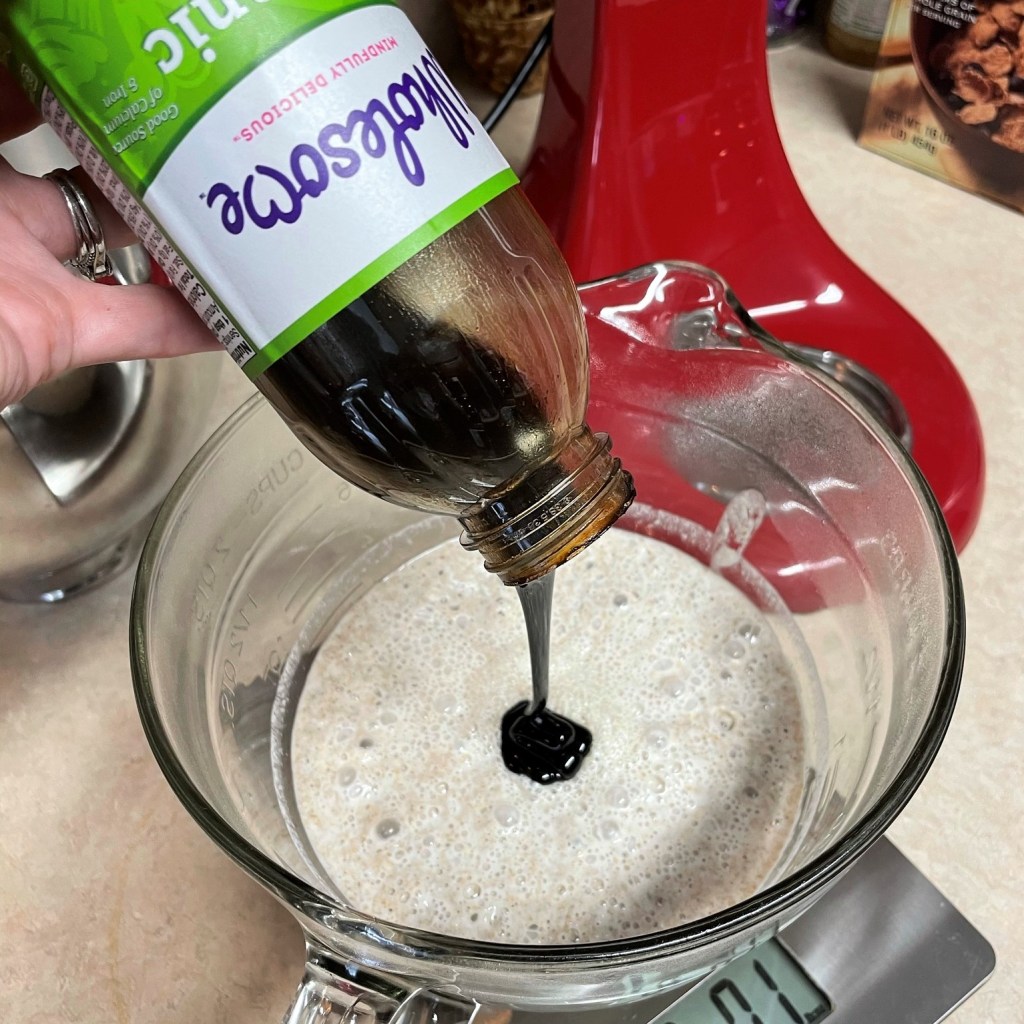
Molasses adds an earthy sweetness, as well as deep color. 
Onion is a terrific companion to the rye, dill and caraway. I use about a tablespoon of minced dry onion, moistened with just enough hot water to cover it. Give it a few minutes to plump up. 
My recipe requires oil, and I’ve chosen this dill-infused olive oil. I’m always pushing my foods an extra step forward in flavor. 
Caraway is the flavor most people associate with rye or pumpernickel bread, and it can be polarizing. If you “don’t like rye,” it’s probably not the rye grain, but the caraway.
The resulting bread never ceases to thrill my taste buds, and it has been terrific this past week with our homemade corned beef, but I confess my favorite way to enjoy it is the same as most every bread—it makes fabulous toast!

Ingredients
On Day 1:
7 oz. ripe (recently fed) sourdough starter
4.25 oz. coarse whole grain rye flour* (see notes)
6 oz. water, room temperature
Combine the starter, coarse rye flour and water in a medium bowl. Cover with plastic wrap and let it ferment at room temperature about 5 hours, until it looks very bubbly and active. Transfer the sponge to the refrigerator overnight.
On Day 2:
2 Tbsp. molasses
2 oz. water, room temperature
2 Tbsp. olive oil (mine is infused with dill)
1 heaping Tbsp. minced dried onion, rehydrated with warm water
9 oz. bread flour*
1 Tbsp. cocoa powder* (optional, see notes)
1 tsp. instant dry yeast*
1 1/2 tsp. fine-textured salt
1 Tbsp. caraway seed, plus a few sprinkles for topping* (optional)
Up to a cup of dry bread crumbs from a previous rye loaf* (optional)
1 or 2 tsp. dried dill leaves (optional)
Egg wash for topping and cornmeal for baking
*Notes
If you don’t have a grain mill, it’s no problem. Use whole rye flour, which is available in specialty markets such as Whole Foods. The pre-milled flour and resulting bread will have a finer texture, but all the flavors will still be present.
I mentioned above that strong coffee is sometimes used to give deep color to pumpernickel, but for this recipe, I would not recommend using brewed coffee in the overnight sponge. Espresso powder or a fine-textured instant coffee mixed with the flour would be a better bet if coffee is your coloring agent of choice.
Caraway seeds give a distinct note to rye or pumpernickel bread, but it is a polarizing flavor for some people. When someone tells me they don’t like rye bread, I usually assume it is the caraway. It is a warm, slightly biting flavor, and I love it, so I put it in the dough and also on top of the bread.
The addition of the “old” bread crumbs is optional, but it adds an interesting texture and depth of flavor to the finished bread. In a way, the secondary crumbs are another type of sourdough, given that the flavor and existing yeast in them contribute something to the final product. If you choose to try this, I would recommend using crumbs from a home-baked bread, and preferably sourdough, to exclude unnecessary commercial preservatives and such.
Instructions
- The day before you intend to make this sourdough pumpernickel, you will need to feed your starter with the entire amount of coarse, whole grain rye flour and water to make it a soupy mixture. Cover it with plastic wrap and give it a few hours at room temperature until it becomes foamy and bubbly, then put it to bed in the fridge until morning.
- Remove the sponge from the fridge for about an hour to knock the chill off it. Pour a small amount of boiling water over the dried chopped onions to re-hydrate them.
- In the mixing bowl of a stand mixer, combine the bread flour, cocoa, salt, instant dry yeast and caraway seed. If using the “old bread” technique, also add the crumbs to the flour blend.
- Stir water, molasses and oil into the fermented sponge.
- Combine the sponge mixture and re-hydrated onions with the dry ingredients and mix with a beater blade until dough becomes a cohesive mass around the beater. Scrape down dough, cover the bowl with plastic wrap or a slightly damp towel and rest 30 minutes.
- Switch to the dough hook and knead in the stand mixer about 5 minutes. The dough will be dense and sticky, but resist the temptation to add more flour or you will end up with a gummy bread.
- Shape dough into a smooth ball and place it in a large, oiled bowl. Cover and rest in a quiet, warm spot of the kitchen until dough has doubled in size, which may be anywhere from 2 to 3 hours, depending on ambient room temperature.
- Grease a 9-inch loaf pan and sprinkle corn meal into the pan, tapping to distribute it evenly in the pan.
- Turn dough out onto a lightly floured counter, pressing and stretching the dough into an oblong shape, about 8 inches wide and 16 inches long. Sprinkle the dried dill onto the dough, then roll it up into a loaf shape to match the length of your bread pan. The loaf will rise more evenly if the ends of the dough meet the ends of the pan. Cover with plastic wrap or an elastic cover and let the bread proof 60 to 90 minutes, until dough has risen to about an inch above the rim of the pan.
- Near the end of the proofing time, preheat the oven to 350° F, with rack in the center.
- Brush the surface of the bread with egg wash and sprinkle it with additional caraway seeds.
- Bake for 45 minutes, turning bread halfway through baking time. Internal temperature should be about 190° F and the bread should sound hollow when thumped on the bottom.
- Turn bread out onto a cooling rack, and cool completely before slicing.

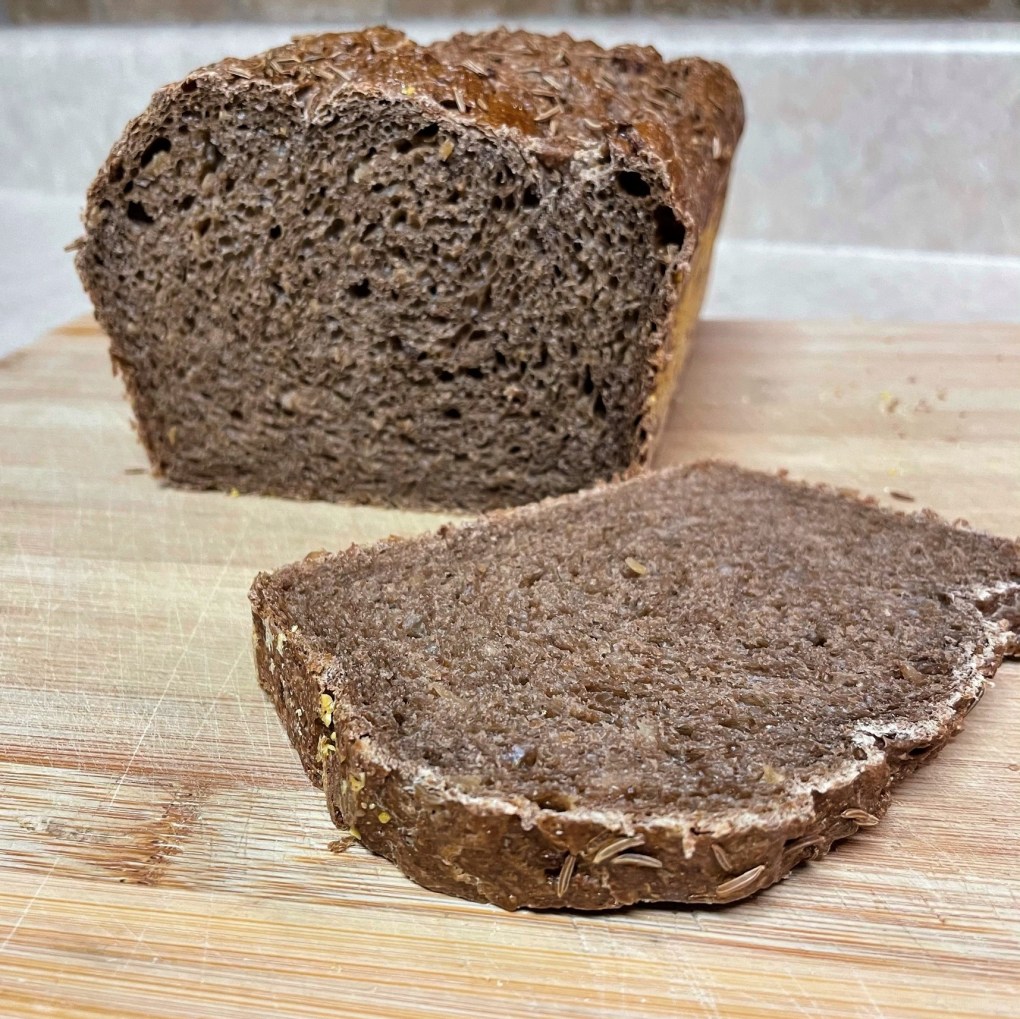
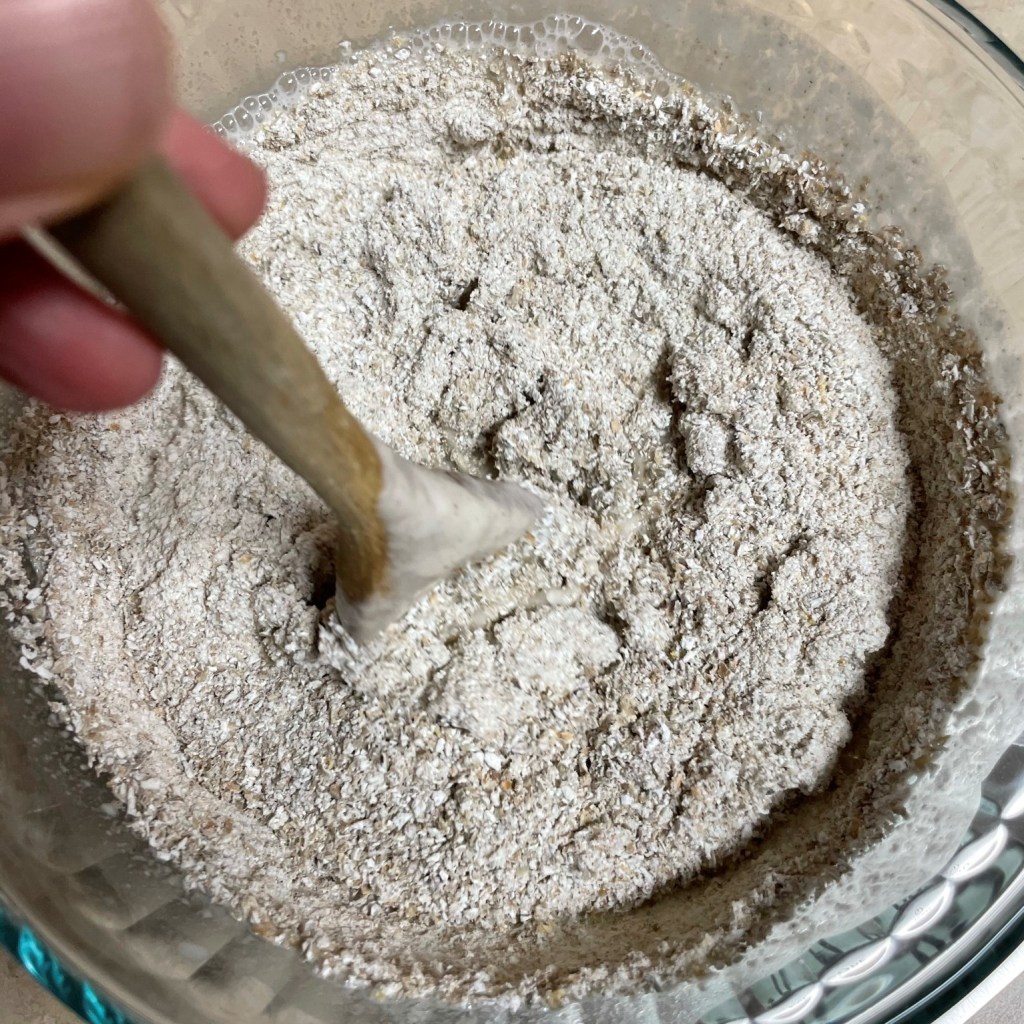




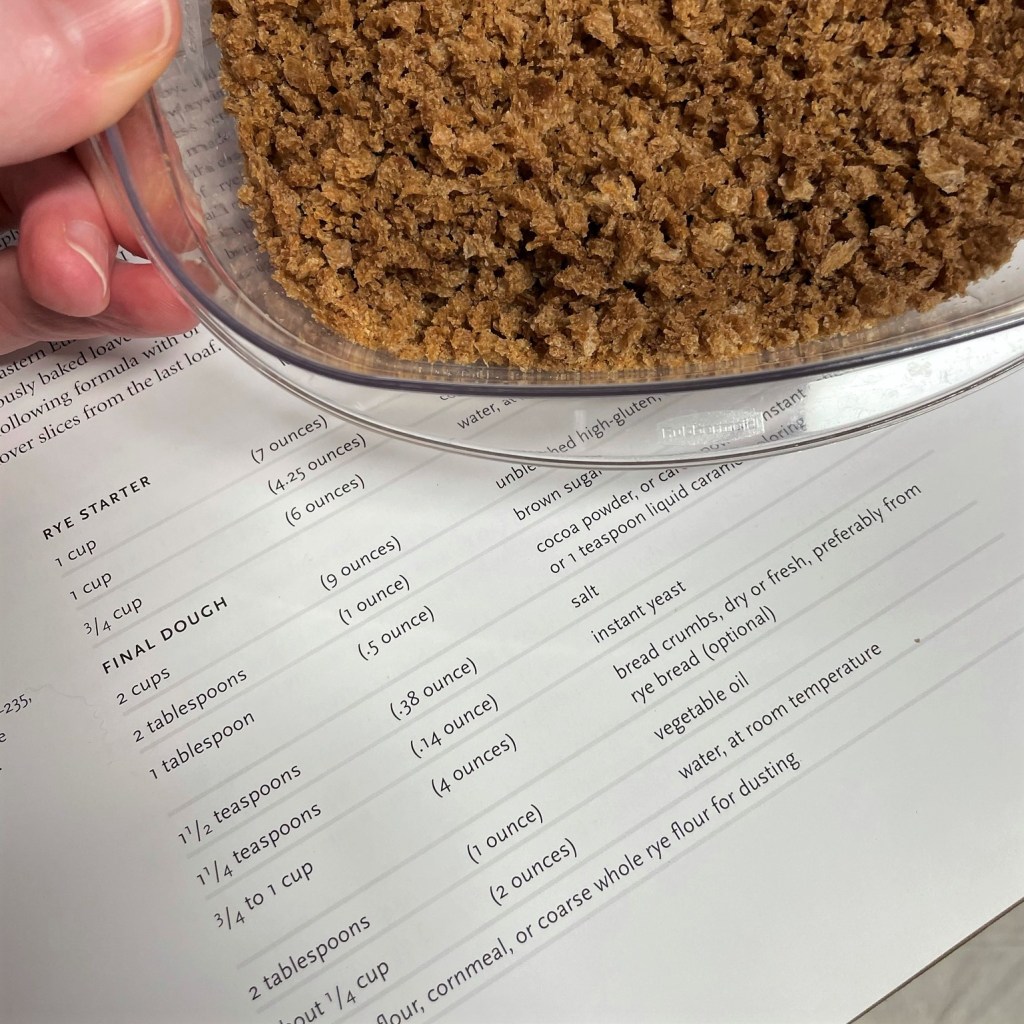
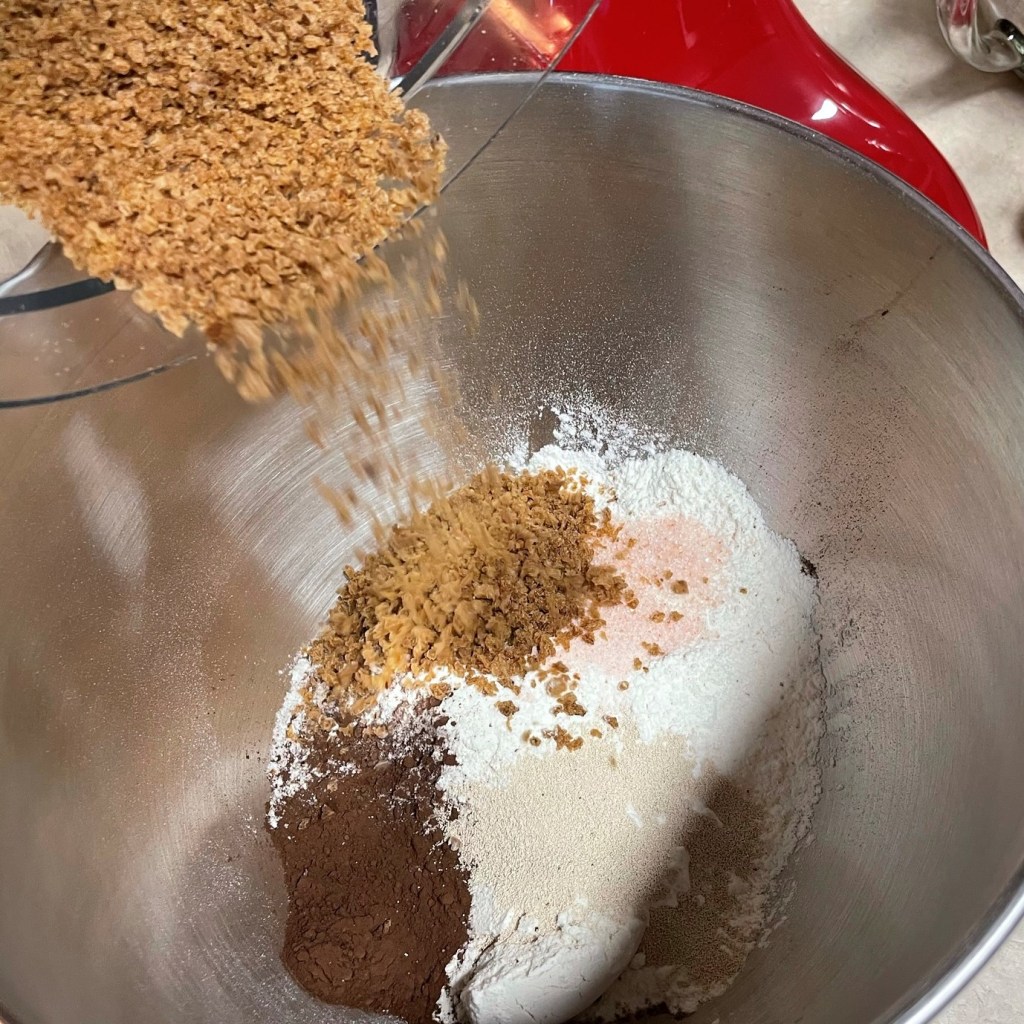



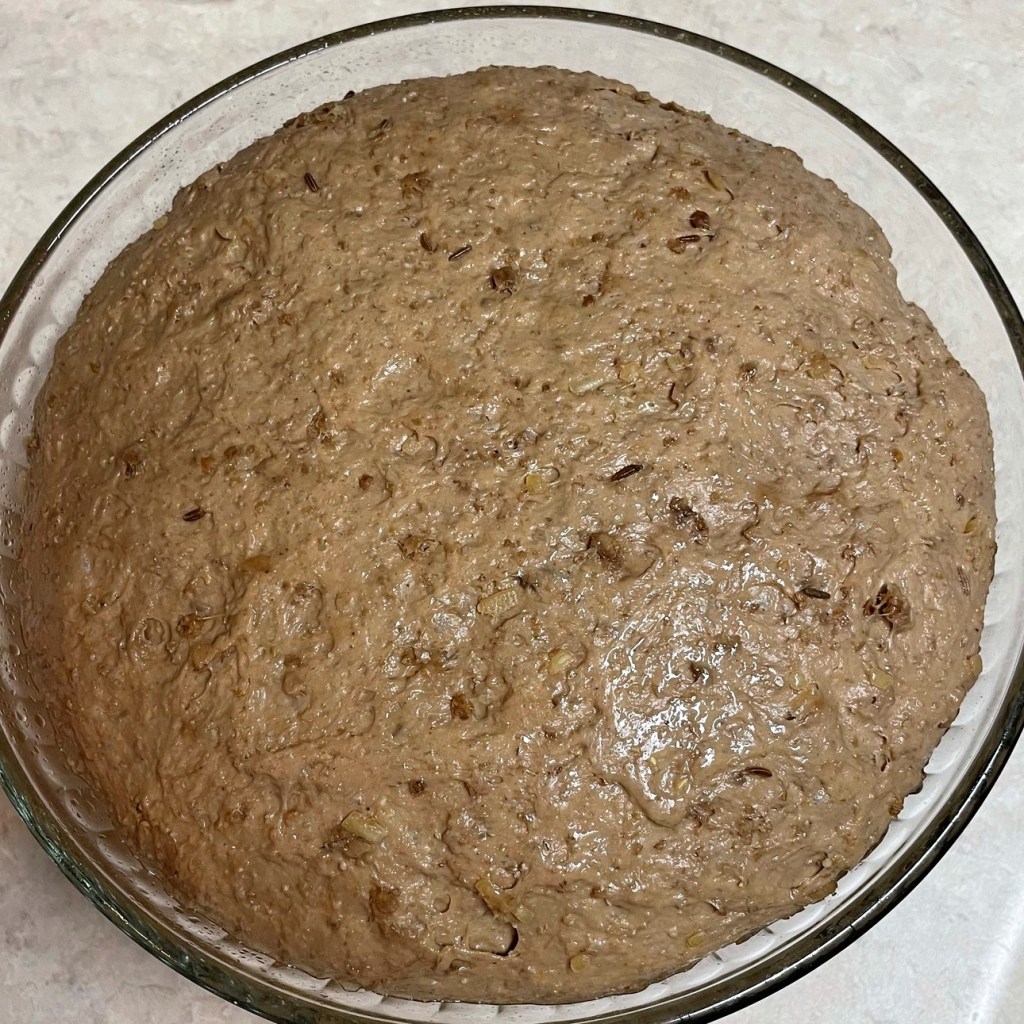
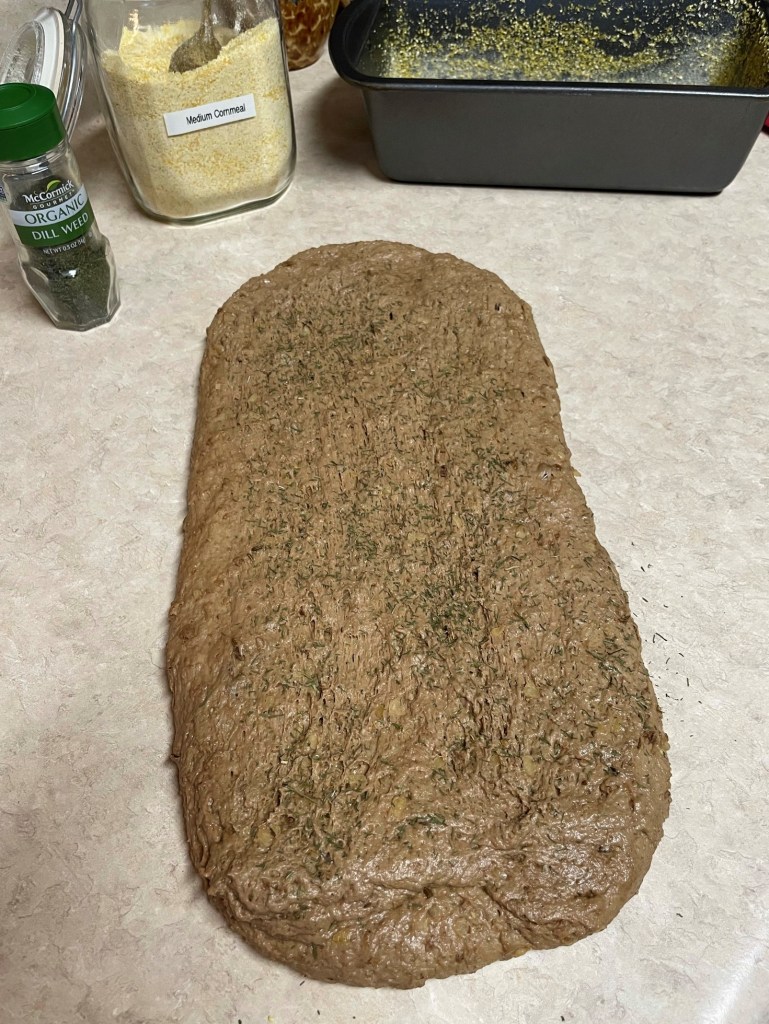
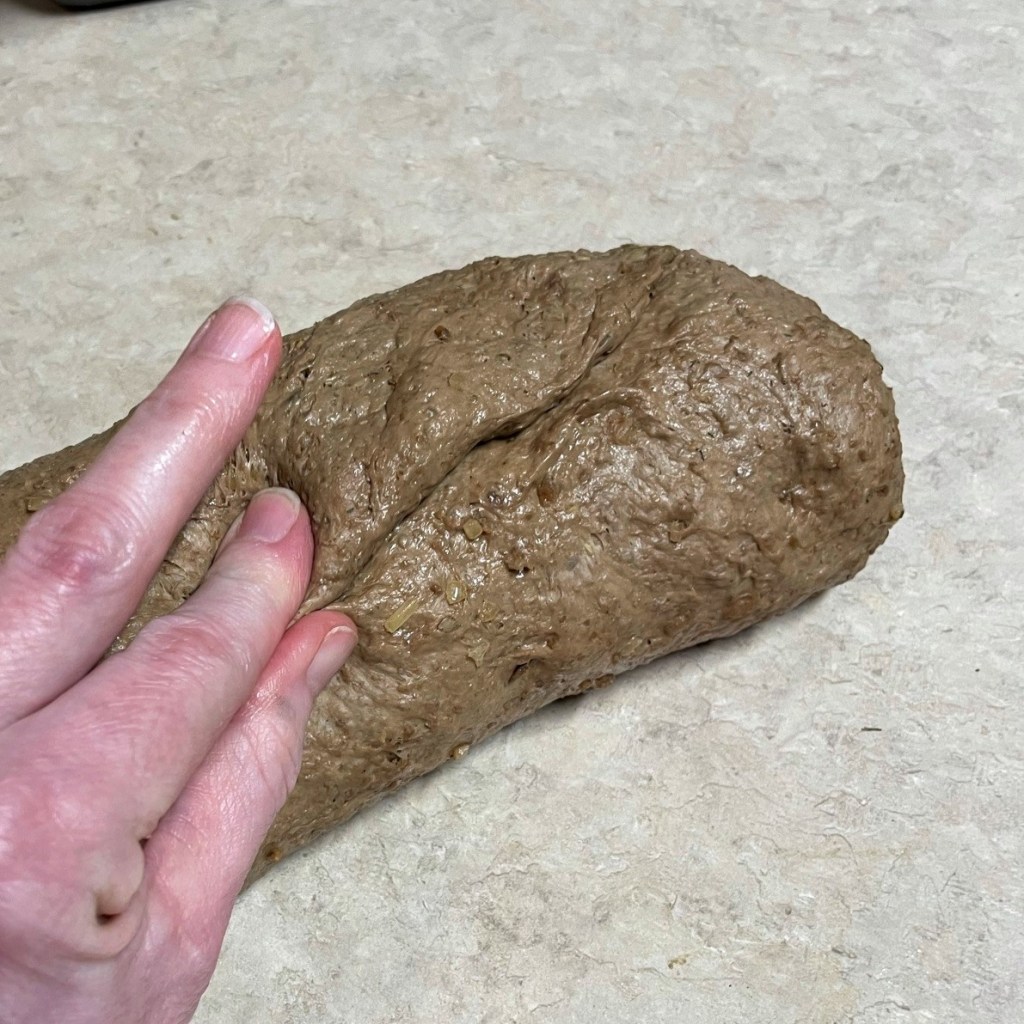




16 thoughts on “Sourdough Pumpernickel”